Aligners
Lingual Braces
Retainers
Children
Teenagers
Adults
Cosmetic Orthodontics
Functional Orthodontics
Preventive Orthodontics
Online
Dental Clinics
Hospitals
North America
Europe
South America
Asia Pacific
Middle East and Africa
North America Outlook (USD Billion, 2019-2035)
North America Invisible Orthodontics Market by Product Type
Aligners
Lingual Braces
Retainers
North America Invisible Orthodontics Market by Age Group Type
Children
Teenagers
Adults
North America Invisible Orthodontics Market by Treatment Type
Cosmetic Orthodontics
Functional Orthodontics
Preventive Orthodontics
North America Invisible Orthodontics Market by Distribution Channel Type
Online
Dental Clinics
Hospitals
North America Invisible Orthodontics Market by Regional Type
US
Canada
US Outlook (USD Billion, 2019-2035)
US Invisible Orthodontics Market by Product Type
Aligners
Lingual Braces
Retainers
US Invisible Orthodontics Market by Age Group Type
Children
Teenagers
Adults
US Invisible Orthodontics Market by Treatment Type
Cosmetic Orthodontics
Functional Orthodontics
Preventive Orthodontics
US Invisible Orthodontics Market by Distribution Channel Type
Online
Dental Clinics
Hospitals
CANADA Outlook (USD Billion, 2019-2035)
CANADA Invisible Orthodontics Market by Product Type
Aligners
Lingual Braces
Retainers
CANADA Invisible Orthodontics Market by Age Group Type
Children
Teenagers
Adults
CANADA Invisible Orthodontics Market by Treatment Type
Cosmetic Orthodontics
Functional Orthodontics
Preventive Orthodontics
CANADA Invisible Orthodontics Market by Distribution Channel Type
Online
Dental Clinics
Hospitals
Europe Outlook (USD Billion, 2019-2035)
Europe Invisible Orthodontics Market by Product Type
Aligners
Lingual Braces
Retainers
Europe Invisible Orthodontics Market by Age Group Type
Children
Teenagers
Adults
Europe Invisible Orthodontics Market by Treatment Type
Cosmetic Orthodontics
Functional Orthodontics
Preventive Orthodontics
Europe Invisible Orthodontics Market by Distribution Channel Type
Online
Dental Clinics
Hospitals
Europe Invisible Orthodontics Market by Regional Type
Germany
UK
France
Russia
Italy
Spain
Rest of Europe
GERMANY Outlook (USD Billion, 2019-2035)
GERMANY Invisible Orthodontics Market by Product Type
Aligners
Lingual Braces
Retainers
GERMANY Invisible Orthodontics Market by Age Group Type
Children
Teenagers
Adults
GERMANY Invisible Orthodontics Market by Treatment Type
Cosmetic Orthodontics
Functional Orthodontics
Preventive Orthodontics
GERMANY Invisible Orthodontics Market by Distribution Channel Type
Online
Dental Clinics
Hospitals
UK Outlook (USD Billion, 2019-2035)
UK Invisible Orthodontics Market by Product Type
Aligners
Lingual Braces
Retainers
UK Invisible Orthodontics Market by Age Group Type
Children
Teenagers
Adults
UK Invisible Orthodontics Market by Treatment Type
Cosmetic Orthodontics
Functional Orthodontics
Preventive Orthodontics
UK Invisible Orthodontics Market by Distribution Channel Type
Online
Dental Clinics
Hospitals
FRANCE Outlook (USD Billion, 2019-2035)
FRANCE Invisible Orthodontics Market by Product Type
Aligners
Lingual Braces
Retainers
FRANCE Invisible Orthodontics Market by Age Group Type
Children
Teenagers
Adults
FRANCE Invisible Orthodontics Market by Treatment Type
Cosmetic Orthodontics
Functional Orthodontics
Preventive Orthodontics
FRANCE Invisible Orthodontics Market by Distribution Channel Type
Online
Dental Clinics
Hospitals
RUSSIA Outlook (USD Billion, 2019-2035)
RUSSIA Invisible Orthodontics Market by Product Type
Aligners
Lingual Braces
Retainers
RUSSIA Invisible Orthodontics Market by Age Group Type
Children
Teenagers
Adults
RUSSIA Invisible Orthodontics Market by Treatment Type
Cosmetic Orthodontics
Functional Orthodontics
Preventive Orthodontics
RUSSIA Invisible Orthodontics Market by Distribution Channel Type
Online
Dental Clinics
Hospitals
ITALY Outlook (USD Billion, 2019-2035)
ITALY Invisible Orthodontics Market by Product Type
Aligners
Lingual Braces
Retainers
ITALY Invisible Orthodontics Market by Age Group Type
Children
Teenagers
Adults
ITALY Invisible Orthodontics Market by Treatment Type
Cosmetic Orthodontics
Functional Orthodontics
Preventive Orthodontics
ITALY Invisible Orthodontics Market by Distribution Channel Type
Online
Dental Clinics
Hospitals
SPAIN Outlook (USD Billion, 2019-2035)
SPAIN Invisible Orthodontics Market by Product Type
Aligners
Lingual Braces
Retainers
SPAIN Invisible Orthodontics Market by Age Group Type
Children
Teenagers
Adults
SPAIN Invisible Orthodontics Market by Treatment Type
Cosmetic Orthodontics
Functional Orthodontics
Preventive Orthodontics
SPAIN Invisible Orthodontics Market by Distribution Channel Type
Online
Dental Clinics
Hospitals
REST OF EUROPE Outlook (USD Billion, 2019-2035)
REST OF EUROPE Invisible Orthodontics Market by Product Type
Aligners
Lingual Braces
Retainers
REST OF EUROPE Invisible Orthodontics Market by Age Group Type
Children
Teenagers
Adults
REST OF EUROPE Invisible Orthodontics Market by Treatment Type
Cosmetic Orthodontics
Functional Orthodontics
Preventive Orthodontics
REST OF EUROPE Invisible Orthodontics Market by Distribution Channel Type
Online
Dental Clinics
Hospitals
APAC Outlook (USD Billion, 2019-2035)
APAC Invisible Orthodontics Market by Product Type
Aligners
Lingual Braces
Retainers
APAC Invisible Orthodontics Market by Age Group Type
Children
Teenagers
Adults
APAC Invisible Orthodontics Market by Treatment Type
Cosmetic Orthodontics
Functional Orthodontics
Preventive Orthodontics
APAC Invisible Orthodontics Market by Distribution Channel Type
Online
Dental Clinics
Hospitals
APAC Invisible Orthodontics Market by Regional Type
China
India
Japan
South Korea
Malaysia
Thailand
Indonesia
Rest of APAC
CHINA Outlook (USD Billion, 2019-2035)
CHINA Invisible Orthodontics Market by Product Type
Aligners
Lingual Braces
Retainers
CHINA Invisible Orthodontics Market by Age Group Type
Children
Teenagers
Adults
CHINA Invisible Orthodontics Market by Treatment Type
Cosmetic Orthodontics
Functional Orthodontics
Preventive Orthodontics
CHINA Invisible Orthodontics Market by Distribution Channel Type
Online
Dental Clinics
Hospitals
INDIA Outlook (USD Billion, 2019-2035)
INDIA Invisible Orthodontics Market by Product Type
Aligners
Lingual Braces
Retainers
INDIA Invisible Orthodontics Market by Age Group Type
Children
Teenagers
Adults
INDIA Invisible Orthodontics Market by Treatment Type
Cosmetic Orthodontics
Functional Orthodontics
Preventive Orthodontics
INDIA Invisible Orthodontics Market by Distribution Channel Type
Online
Dental Clinics
Hospitals
JAPAN Outlook (USD Billion, 2019-2035)
JAPAN Invisible Orthodontics Market by Product Type
Aligners
Lingual Braces
Retainers
JAPAN Invisible Orthodontics Market by Age Group Type
Children
Teenagers
Adults
JAPAN Invisible Orthodontics Market by Treatment Type
Cosmetic Orthodontics
Functional Orthodontics
Preventive Orthodontics
JAPAN Invisible Orthodontics Market by Distribution Channel Type
Online
Dental Clinics
Hospitals
SOUTH KOREA Outlook (USD Billion, 2019-2035)
SOUTH KOREA Invisible Orthodontics Market by Product Type
Aligners
Lingual Braces
Retainers
SOUTH KOREA Invisible Orthodontics Market by Age Group Type
Children
Teenagers
Adults
SOUTH KOREA Invisible Orthodontics Market by Treatment Type
Cosmetic Orthodontics
Functional Orthodontics
Preventive Orthodontics
SOUTH KOREA Invisible Orthodontics Market by Distribution Channel Type
Online
Dental Clinics
Hospitals
MALAYSIA Outlook (USD Billion, 2019-2035)
MALAYSIA Invisible Orthodontics Market by Product Type
Aligners
Lingual Braces
Retainers
MALAYSIA Invisible Orthodontics Market by Age Group Type
Children
Teenagers
Adults
MALAYSIA Invisible Orthodontics Market by Treatment Type
Cosmetic Orthodontics
Functional Orthodontics
Preventive Orthodontics
MALAYSIA Invisible Orthodontics Market by Distribution Channel Type
Online
Dental Clinics
Hospitals
THAILAND Outlook (USD Billion, 2019-2035)
THAILAND Invisible Orthodontics Market by Product Type
Aligners
Lingual Braces
Retainers
THAILAND Invisible Orthodontics Market by Age Group Type
Children
Teenagers
Adults
THAILAND Invisible Orthodontics Market by Treatment Type
Cosmetic Orthodontics
Functional Orthodontics
Preventive Orthodontics
THAILAND Invisible Orthodontics Market by Distribution Channel Type
Online
Dental Clinics
Hospitals
INDONESIA Outlook (USD Billion, 2019-2035)
INDONESIA Invisible Orthodontics Market by Product Type
Aligners
Lingual Braces
Retainers
INDONESIA Invisible Orthodontics Market by Age Group Type
Children
Teenagers
Adults
INDONESIA Invisible Orthodontics Market by Treatment Type
Cosmetic Orthodontics
Functional Orthodontics
Preventive Orthodontics
INDONESIA Invisible Orthodontics Market by Distribution Channel Type
Online
Dental Clinics
Hospitals
REST OF APAC Outlook (USD Billion, 2019-2035)
REST OF APAC Invisible Orthodontics Market by Product Type
Aligners
Lingual Braces
Retainers
REST OF APAC Invisible Orthodontics Market by Age Group Type
Children
Teenagers
Adults
REST OF APAC Invisible Orthodontics Market by Treatment Type
Cosmetic Orthodontics
Functional Orthodontics
Preventive Orthodontics
REST OF APAC Invisible Orthodontics Market by Distribution Channel Type
Online
Dental Clinics
Hospitals
South America Outlook (USD Billion, 2019-2035)
South America Invisible Orthodontics Market by Product Type
Aligners
Lingual Braces
Retainers
South America Invisible Orthodontics Market by Age Group Type
Children
Teenagers
Adults
South America Invisible Orthodontics Market by Treatment Type
Cosmetic Orthodontics
Functional Orthodontics
Preventive Orthodontics
South America Invisible Orthodontics Market by Distribution Channel Type
Online
Dental Clinics
Hospitals
South America Invisible Orthodontics Market by Regional Type
Brazil
Mexico
Argentina
Rest of South America
BRAZIL Outlook (USD Billion, 2019-2035)
BRAZIL Invisible Orthodontics Market by Product Type
Aligners
Lingual Braces
Retainers
BRAZIL Invisible Orthodontics Market by Age Group Type
Children
Teenagers
Adults
BRAZIL Invisible Orthodontics Market by Treatment Type
Cosmetic Orthodontics
Functional Orthodontics
Preventive Orthodontics
BRAZIL Invisible Orthodontics Market by Distribution Channel Type
Online
Dental Clinics
Hospitals
MEXICO Outlook (USD Billion, 2019-2035)
MEXICO Invisible Orthodontics Market by Product Type
Aligners
Lingual Braces
Retainers
MEXICO Invisible Orthodontics Market by Age Group Type
Children
Teenagers
Adults
MEXICO Invisible Orthodontics Market by Treatment Type
Cosmetic Orthodontics
Functional Orthodontics
Preventive Orthodontics
MEXICO Invisible Orthodontics Market by Distribution Channel Type
Online
Dental Clinics
Hospitals
ARGENTINA Outlook (USD Billion, 2019-2035)
ARGENTINA Invisible Orthodontics Market by Product Type
Aligners
Lingual Braces
Retainers
ARGENTINA Invisible Orthodontics Market by Age Group Type
Children
Teenagers
Adults
ARGENTINA Invisible Orthodontics Market by Treatment Type
Cosmetic Orthodontics
Functional Orthodontics
Preventive Orthodontics
ARGENTINA Invisible Orthodontics Market by Distribution Channel Type
Online
Dental Clinics
Hospitals
REST OF SOUTH AMERICA Outlook (USD Billion, 2019-2035)
REST OF SOUTH AMERICA Invisible Orthodontics Market by Product Type
Aligners
Lingual Braces
Retainers
REST OF SOUTH AMERICA Invisible Orthodontics Market by Age Group Type
Children
Teenagers
Adults
REST OF SOUTH AMERICA Invisible Orthodontics Market by Treatment Type
Cosmetic Orthodontics
Functional Orthodontics
Preventive Orthodontics
REST OF SOUTH AMERICA Invisible Orthodontics Market by Distribution Channel Type
Online
Dental Clinics
Hospitals
MEA Outlook (USD Billion, 2019-2035)
MEA Invisible Orthodontics Market by Product Type
Aligners
Lingual Braces
Retainers
MEA Invisible Orthodontics Market by Age Group Type
Children
Teenagers
Adults
MEA Invisible Orthodontics Market by Treatment Type
Cosmetic Orthodontics
Functional Orthodontics
Preventive Orthodontics
MEA Invisible Orthodontics Market by Distribution Channel Type
Online
Dental Clinics
Hospitals
MEA Invisible Orthodontics Market by Regional Type
GCC Countries
South Africa
Rest of MEA
GCC COUNTRIES Outlook (USD Billion, 2019-2035)
GCC COUNTRIES Invisible Orthodontics Market by Product Type
Aligners
Lingual Braces
Retainers
GCC COUNTRIES Invisible Orthodontics Market by Age Group Type
Children
Teenagers
Adults
GCC COUNTRIES Invisible Orthodontics Market by Treatment Type
Cosmetic Orthodontics
Functional Orthodontics
Preventive Orthodontics
GCC COUNTRIES Invisible Orthodontics Market by Distribution Channel Type
Online
Dental Clinics
Hospitals
SOUTH AFRICA Outlook (USD Billion, 2019-2035)
SOUTH AFRICA Invisible Orthodontics Market by Product Type
Aligners
Lingual Braces
Retainers
SOUTH AFRICA Invisible Orthodontics Market by Age Group Type
Children
Teenagers
Adults
SOUTH AFRICA Invisible Orthodontics Market by Treatment Type
Cosmetic Orthodontics
Functional Orthodontics
Preventive Orthodontics
SOUTH AFRICA Invisible Orthodontics Market by Distribution Channel Type
Online
Dental Clinics
Hospitals
REST OF MEA Outlook (USD Billion, 2019-2035)
REST OF MEA Invisible Orthodontics Market by Product Type
Aligners
Lingual Braces
Retainers
REST OF MEA Invisible Orthodontics Market by Age Group Type
Children
Teenagers
Adults
REST OF MEA Invisible Orthodontics Market by Treatment Type
Cosmetic Orthodontics
Functional Orthodontics
Preventive Orthodontics
REST OF MEA Invisible Orthodontics Market by Distribution Channel Type
Online
Dental Clinics
Hospitals

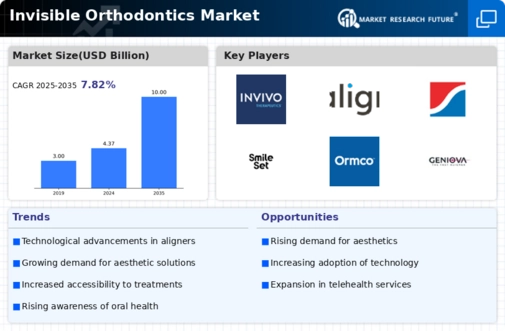

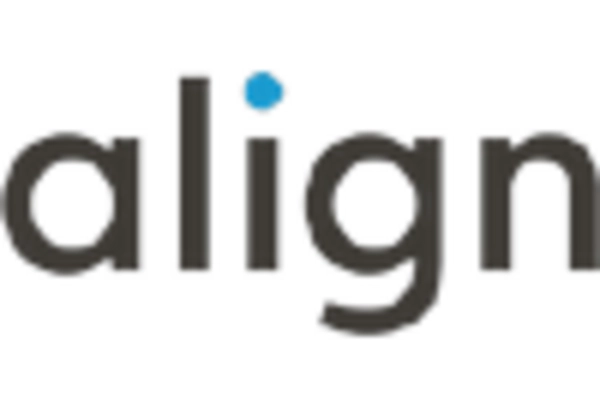

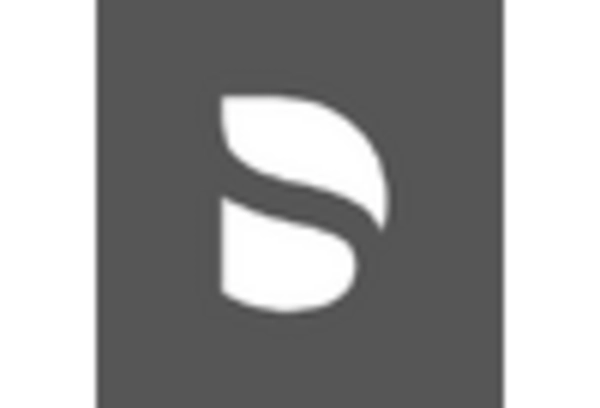
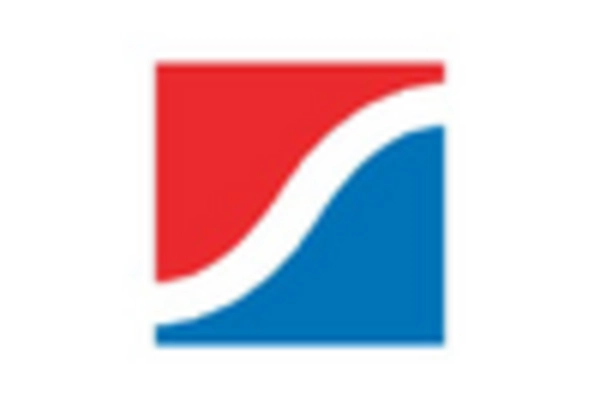
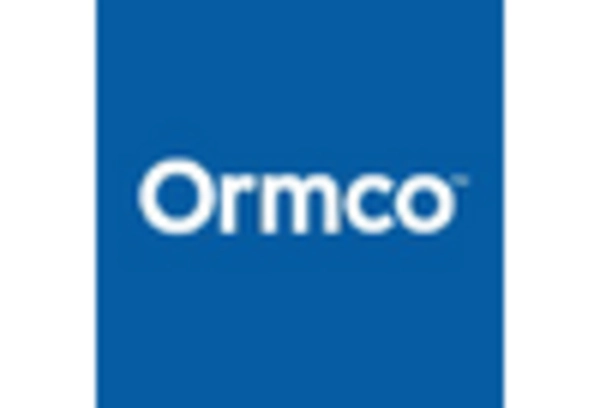









Leave a Comment